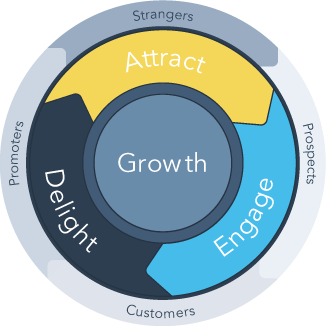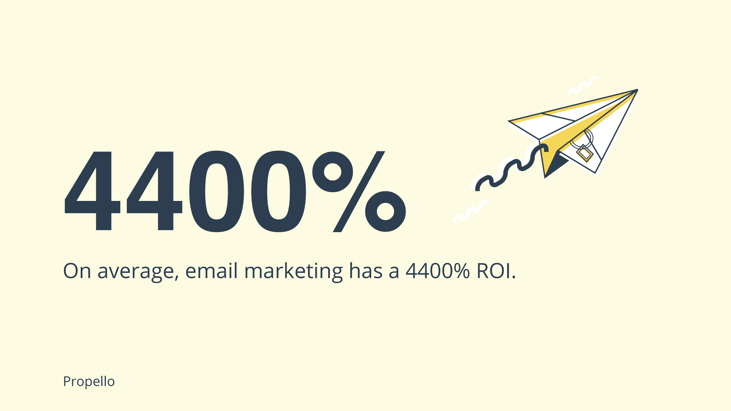Have you ever wondered why some marketing strategies seem to resonate deeply with audiences while others fall flat? What if the secret to attracting customers lies not in broadcasting louder but in listening more intently?
In a world saturated with advertisements, how can we create content that genuinely captivates and engages? These questions form the cornerstone of inbound marketing, a strategic approach that shifts the focus from interruption to invitation.
Imagine a marketing strategy that doesn't just aim to sell but seeks to build meaningful relationships. What if you could transform potential customers into loyal advocates by understanding their needs and providing them with valuable content? As we delve into the world of inbound marketing, consider this: how can your business harness the power of personalized experiences not only to meet but exceed customer expectations?
Join us on this exploration of inbound marketing, where we'll uncover the techniques, strategies, and insights that can elevate your brand's presence and impact. Are you ready to rethink your marketing approach and embrace a method that not only attracts but also delights and retains customers?
Let's go on this journey together and discover how inbound marketing can revolutionize the way you connect with your audience.
|
Inbound Marketing A business methodology that attracts customers by creating valuable content and experiences tailored to them. |
Introduction to Inbound Marketing
Inbound marketing is a strategic approach that focuses on creating valuable content and experiences tailored to the needs of your target audience to build long-term relationships. Unlike outbound marketing, which pushes messages to a broad audience, inbound marketing prioritizes the needs and interests of the customer.
By understanding the buyer’s journey and creating relevant content, businesses can attract potential customers, build trust, and ultimately drive conversions.
This customer-centric approach involves using various inbound marketing strategies to engage with your audience. Whether it’s through blog posts, social media, or email campaigns, the goal is to provide valuable content that resonates with your audience. By doing so, you not only attract customers but also foster long-term relationships that contribute to sustained business growth.
Understanding Inbound Marketing
Inbound marketing is a strategy that emphasizes attracting customers through valuable content and experiences tailored to their interests, utilizing various inbound marketing techniques and tactics to effectively market to target audiences.
This inbound marketing approach contrasts with outbound marketing, which pushes messages to a wide audience, often interrupting their activities, as part of an inbound marketing campaign. An inbound marketer plays a crucial role in this process by creating content that drives inbound marketing.
Additionally, effective inbound marketing work can significantly enhance customer engagement, especially when inbound marketers focus on delivering targeted messages. Inbound marketing vs outbound marketing highlights the differences in these approaches, including the importance of an inbound strategy.
Definition of Inbound Marketing
Inbound marketing focuses on attracting customers through tailored content and experiences that meet their interests. Digital marketing plays a crucial role in inbound marketing by utilizing various online strategies and tools to attract and convert leads.
Understanding your target audience and creating buyer personas enables you to craft engaging marketing strategies.
Social media and email are crucial channels for driving engagement and conversions with personalized content.
Key Components of Inbound Marketing
The essential elements of inbound marketing include:
-
SMART Goals: Setting Specific, Measurable, Achievable, Relevant, and Time-bound goals ensures that your inbound marketing efforts are aligned with your business objectives and can be effectively monitored and optimized.
-
SEO Optimization: Helps your brand rank on search engines.
-
Content Marketing: Nurtures leads through valuable content creation.
-
Social Media Marketing: Allows for direct engagement with your audience, increasing brand awareness and loyalty.
-
Landing Pages: Serve as crucial tools for converting visitors into leads by providing targeted information and capturing contact details.
-
Buyer Persona: Creating detailed profiles of your ideal customers helps tailor your inbound marketing strategies to meet their specific needs and preferences.
-
Content Creation: Involves crafting high-quality, relevant content that resonates with your target audience and addresses their pain points.
-
Inbound Marketing Tools: Essential resources for executing strategies that attract and engage potential customers. These tools, categorized into automation, email, social media, and content management, enhance marketing efforts and streamline workflows.
Understanding the Buyer’s Journey
The buyer’s journey is the process that customers go through when making a purchase. It consists of three stages: awareness, consideration, and decision. Understanding the buyer’s journey is crucial for creating effective inbound marketing campaigns. By creating buyer personas and mapping the customer journey, businesses can identify the needs and pain points of their target audience and develop targeted content to address them effectively.
In the awareness stage, potential customers become aware that they have a problem or need. During the consideration stage, they evaluate different solutions. Finally, in the decision stage, they choose a specific product or service. By understanding these stages, businesses can create content that guides potential customers through their journey, building trust and establishing the business as a thought leader in the industry. This targeted approach ultimately drives conversions and revenue growth.
Benefits of Inbound Marketing
Inbound marketing offers a myriad of advantages that can significantly enhance your business's reach and effectiveness. By focusing on creating valuable content and fostering genuine connections with your target audience, inbound marketing strategies pave the way for sustainable growth and customer loyalty. Here are some of the key benefits that make inbound marketing a powerful tool for modern businesses:
-
Increased Visibility and Brand Awareness: Inbound marketing enhances your brand's presence through organic channels like SEO and social media, attracting high-quality leads.
-
Cost-Effectiveness: Utilizing organic methods such as content creation reduces marketing costs compared to traditional advertising.
-
High-Quality Lead Generation: By targeting audiences actively seeking information, inbound marketing attracts potential customers who are more likely to convert.
-
Improved Customer Relationships and Trust: Providing valuable content helps build credibility, encouraging future purchases from your brand.
-
Enhanced Customer Segmentation: Inbound marketing allows for personalized marketing efforts, leading to higher conversion rates.
-
Long-Term Relationships: Focusing on delivering relevant content fosters loyalty and long-lasting connections with customers.
The Inbound Methodology
Inbound marketing is a strategic approach that focuses on attracting, engaging, and delighting customers at every stage of their journey. The inbound methodology is a framework designed to guide potential customers through a seamless experience from awareness to advocacy.
A crucial aspect of this methodology is understanding the buyer's journey, which involves adapting strategies and content to effectively engage and guide potential customers through each phase.
By leveraging personalized content and valuable interactions, businesses can foster meaningful relationships and drive sustainable growth. Let’s delve into the key stages of the inbound methodology and explore how they contribute to a successful inbound marketing strategy.
The inbound marketing methodology includes four main stages:
-
Attract
-
Convert
-
Close
-
Delight
These stages are designed to guide customers through their buyer’s journey, from initial awareness to making a purchase and becoming loyal advocates in the sales process.
Combining inbound strategies with outbound efforts can foster loyal customers’ trust and loyalty through consistent engagement. This approach helps guide converting customers through their journey, ensuring a seamless experience from start to finish.

Attract Stage
The attract stage focuses on bringing new visitors to your website through content creation and development. Appearing on search engine result pages (SERPs) is crucial for attracting new visitors, as it ensures your content is visible to users searching for relevant information. Strategies such as publishing blog articles, utilizing social media, and optimizing landing pages for an SEO strategy are essential for attracting the target audience of potential customers.
The primary goal is to provide value and attract potential leads who can become customers.
Engage Stage
Engagement strategies aim to establish lasting relationships through value-driven communication that aligns with business goals and a strategic approach, including the development of effective marketing messages. Using tools like CRM systems, businesses can personalize interactions and guide prospects along their buyer’s journey.
Effective customer engagement is ensured by aligning marketing and sales teams.
Delight Stage
The delight stage aims to deliver exceptional experiences and foster strong client relationships. Ensuring customers succeed at this stage is vital, as their success directly impacts the organization's success. Effective strategies include using chatbots, conducting surveys, and engaging in social media listening to provide timely support.
Continually improving the client experience through data and insights is crucial.
The Flywheel
The Flywheel is a core concept in the inbound marketing methodology, emphasizing the importance of customer experience at the heart of your business strategy. Developed by HubSpot, the Flywheel model illustrates how aligning your entire organization around delivering exceptional customer experiences can create momentum and drive business growth.

The Flywheel model describes the stages of the customer journey, starting with awareness, progressing through engagement, and culminating in delight. By focusing on these stages, businesses can harness the power of satisfied customers to generate referrals and repeat sales, fueling ongoing success.
In the Flywheel model, delighting customers beyond the point of purchase is crucial. Happy customers are more likely to share their positive experiences with others, acting as advocates and generating organic leads for your business. This approach not only enhances customer retention but also strengthens brand loyalty.
By integrating the Flywheel into your inbound marketing strategy, you can build a sustainable foundation that leverages customer satisfaction to drive continuous growth and success.
Creating Effective Buyer Personas
Creating effective buyer personas is essential for successful inbound marketing. These semi-fictional representations of your ideal customers help you tailor your marketing strategies to meet their specific needs and preferences.
Collaboration with the sales team is crucial in creating accurate buyer personas, as their insights help map the buyer's journey and address customer needs effectively.
Understanding buyer personas prevents the creation of irrelevant content and helps focus on qualified prospects. Gathering qualitative and quantitative data, along with validating assumptions through direct customer interviews, helps create accurate and useful personas.
What Are Buyer Personas?
A buyer persona is a semi-fictional representation of your ideal customer. These personas are crucial as they help distinguish the characteristics of ideal customers, ensuring your marketing efforts resonate with the target audience.
Understanding buyer personas prevents the creation of irrelevant content and helps focus on qualified prospects.
Steps to Create Buyer Personas
Creating accurate buyer personas involves gathering qualitative and quantitative data. Direct customer interviews are crucial for accurately developing personas and ensuring alignment with the buyer’s journey.
Building a Great Inbound Marketing Campaign
A successful inbound marketing campaign encompasses several key elements, including a clear understanding of the target audience, a well-defined buyer’s journey, and a content strategy that addresses the customer's needs and pain points. It also requires a range of inbound marketing tactics, such as social media marketing, email marketing, and content creation.
Using marketing automation software and analytics tools, businesses can track the effectiveness of their campaign and make data-driven decisions to optimize and improve it. A successful inbound marketing campaign can help businesses to raise brand awareness, drive organic search traffic, and ultimately convert customers. By consistently delivering valuable content and engaging with your audience, you can build a strong brand presence and foster long-term relationships with your customers.
Implementing Inbound Marketing Strategies
Implementing inbound marketing strategies involves a combination of content creation, SEO optimization, email marketing, and social media. Tools like HubSpot, CRM platforms, and marketing automation software are essential for successful execution.
Unlike traditional marketing, which uses aggressive promotional methods to push products toward consumers, inbound marketing focuses on attracting customers through valuable content.
A diverse lead generation strategy incorporates both inbound and outbound methods, including cold calling, to effectively reach potential customers. Aligning resources and continuously refining strategies based on performance data are crucial for success.
Content Creation Strategies
Crafting content that aligns with the target audience’s interests is crucial for engagement. Video content plays a significant role in content creation strategies, enhancing material at different stages of the buyer's journey. Tools like Feedly and Grammarly assist in content marketing by tracking relevant content and optimizing quality content, high-quality content, and creating valuable content.
Investing in a skilled team for content management and SEO is essential for the success of inbound marketing strategies.
SEO Optimization Techniques
SEO optimization techniques are vital for increasing your website’s visibility on search engines. Tools like HubSpot Website Grader, WooRank, and Semrush help analyze and improve website performance and search engine optimization, as well as enhance your search engine presence.
Tracking SEO performance can lead to noticeable improvements in organic traffic, organic search traffic, and leads.
Email Marketing
Effective email marketing creates a personal connection with the target audience, enhancing trust. Utilizing reminders for abandoned carts and engaging emails that link to blog posts or downloadable assets can increase customer interaction.
Tools like Klaviyo help marketers personalize their email campaigns and segment audiences based on behavior.

Social Media
Social media fits well with the inbound methodology. Social media posts are crucial for engaging directly with customers and participating in ongoing conversations. It serves as a channel for promoting content and engaging with prospects.
Platforms like Facebook, Twitter, and LinkedIn enable customers to provide feedback and share their experiences, thereby enhancing brand loyalty and trust.
The Role of Inbound Marketers
Inbound marketers play a crucial role in creating and executing inbound marketing campaigns. They are responsible for understanding the buyer’s journey, creating targeted content, and using inbound marketing tactics to attract and engage potential customers.
Inbound marketers must also be skilled in using marketing automation software and analytics tools to track the effectiveness of campaigns and make data-driven decisions.
By working closely with sales teams and other stakeholders, inbound marketers can help to align marketing efforts with business goals and drive revenue growth. Their ability to create personalized and relevant content ensures that marketing messages resonate with the target audience, leading to higher engagement and conversion rates.
Aligning with Business Goals
Inbound marketing efforts must be aligned with business objectives to be effective. This involves understanding the company’s overall mission and objectives, as well as the specific goals of the marketing team. By using inbound marketing strategies and tactics, businesses can drive website traffic, generate leads, and ultimately convert customers.
Inbound marketing can also help to build brand loyalty and establish the business as a thought leader in the industry. By tracking key metrics such as conversion rate optimization and web analytics, businesses can measure the effectiveness of their inbound marketing efforts and make data-driven decisions to optimize and improve them. This alignment ensures that marketing efforts contribute to the overall success and growth of the business.
The Role of Technology in Inbound Marketing
Technology is crucial for efficiently implementing and scaling inbound marketing strategies. Key tools include CRM software (such as Hubspot) for managing customer interactions, marketing automation for automating repetitive tasks, and analytics platforms for tracking and evaluating campaign performance.
These marketing tools enhance productivity and personalization, making inbound marketing efforts more effective.
Measuring Success in Inbound Marketing
Monitoring inbound marketing metrics enables businesses to pinpoint which channels are most effective and adjust their strategies accordingly. Analyzing metrics allows businesses to uncover the most effective strategies and optimize their efforts accordingly.
Patience is essential in inbound marketing, as it often takes time for efforts to translate into measurable results. The process of analyzing data quantitatively enhances decision-making and helps in achieving better marketing outcomes.
Key Performance Indicators (KPIs)
Tracking KPIs is essential for assessing the success of your inbound marketing efforts. Monitoring website traffic, lead generation, conversion rates, and customer retention rates helps understand audience reach and content effectiveness.
Evaluating ROI determines the financial effectiveness of your marketing spend.
Analytics Tools
Analytics tools like Google Analytics and Ahrefs are essential for tracking the effectiveness of inbound marketing strategies and web analytics. These tools provide insights into visitor behavior, keyword performance, and website health, enabling businesses to optimize performance.
Using these tools streamlines the ability to measure, analyze, and enhance inbound marketing efforts.
Common Challenges and Solutions in Inbound Marketing
-
Visibility and Community Building: Inbound marketing often struggles with gaining visibility and fostering a loyal community. Overcoming these challenges is essential for successful inbound marketing efforts.
-
Engaging Content Creation: Implementing strategies focused on creating engaging and relevant content can help address visibility issues and build a strong community.
-
Customer Experience Prioritization: Another challenge is the need to prioritize customer experiences to maintain momentum and ensure customer satisfaction.
-
Resource Management: Enhancing resource management through strategic planning can significantly boost the effectiveness of inbound marketing campaigns.
-
Overcoming Slow Results: Patience and consistent content production are necessary to sustain momentum during periods of slow results, as success in inbound marketing builds gradually over time.
-
User Generated Content: Encouraging user-generated content, such as real travel experiences shared by hosts and guests on platforms like Airbnb, can significantly enhance search engine visibility and foster a sense of community and loyalty among users.
Resource Intensity
Managing resource intensity is crucial for the success of inbound marketing strategies. Companies often struggle with the time and expertise needed to optimize their conversion rate optimization effectively.
Producing at least 15 new articles monthly can generate five times more leads than publishing only one article.
Slow Results
Maintaining momentum during the waiting period for results can be achieved through consistent content production and engagement activities. It’s essential to remain patient and keep a long-term perspective on inbound marketing efforts, as success builds gradually over time.
Inbound vs Outbound Marketing: A Brief Comparison
Inbound marketing and outbound marketing are two distinct approaches to reaching potential customers. Inbound marketing focuses on attracting customers by creating valuable content that aligns with their interests, fostering long-term relationships through personalized experiences. This approach is more about inviting customers in rather than interrupting them.
On the other hand, outbound marketing involves pushing marketing messages to a broad audience through traditional channels like TV ads, direct mail, and cold calls. It often interrupts the audience's activities, aiming for immediate attention rather than building lasting connections.
While inbound marketing is more cost-effective and customer-centric, outbound marketing can quickly generate awareness and reach a wide audience. By integrating these strategies, businesses can create a balanced marketing approach that leverages the strengths of both methods, enhancing overall engagement and growth.
Integrating Inbound with Outbound Marketing
Merging inbound and outbound marketing creates a balanced strategy that enhances audience reach and engagement. Combining both approaches leverages the strengths of each strategy, creating a comprehensive approach that drives business growth.
Utilizing outbound marketing efforts can effectively generate initial awareness, facilitating successful inbound marketing.
How to Get Started with Inbound Marketing
Starting your inbound marketing journey requires setting clear and achievable marketing goals, along with conducting thorough market and persona research. It's essential to develop a well-structured and flexible content calendar, implement the right technology solutions, and consistently monitor and adjust strategies based on performance data.
These steps are crucial for a successful inbound marketing campaign.
Conclusion
Inbound marketing represents a fundamental shift in how businesses connect and engage with modern consumers. By focusing on genuinely helpful content and personalized experiences, companies build meaningful relationships that support long-term growth and success. Inbound marketing represents a fundamental shift in how businesses connect and engage with modern consumers. By focusing on genuinely helpful content and personalized experiences, companies build meaningful relationships that support long-term growth and success.
Ready to elevate your marketing strategy? Connect with Propello today to craft your personalized inbound marketing strategy and start engaging your audience in meaningful ways.
Frequently Asked Questions
What is the main difference between inbound marketing and outbound marketing?
The main difference is that inbound marketing attracts customers with valuable content, whereas outbound marketing interrupts audiences with broad messages. Therefore, inbound marketing tends to create a more engaging and tailored customer experience.
How can I create effective buyer personas?
To create effective buyer personas, gather both qualitative and quantitative data about your target audience and validate your assumptions through direct interviews with customers. This approach ensures your personas are accurate and actionable.
What are the key components of inbound marketing?
The key components of inbound marketing are SEO optimization, content marketing, social media, and email marketing. Customer testimonials are also crucial as they provide value to the target audience and help communicate how solutions address customer challenges. Together, these elements effectively attract, engage, and delight customers.
How do I measure the success of my inbound marketing efforts?
To effectively measure the success of your inbound marketing efforts, focus on key performance indicators (KPIs) such as website traffic, lead generation, conversion rates, customer retention, and ROI. Monitoring these metrics will provide a clear picture of your marketing effectiveness.
What role does technology play in inbound marketing?
Technology is essential for executing and scaling inbound marketing, leveraging tools like CRM software, marketing automation, and analytics platforms to boost productivity and personalization. This integration ultimately leads to more targeted engagement with potential customers.


